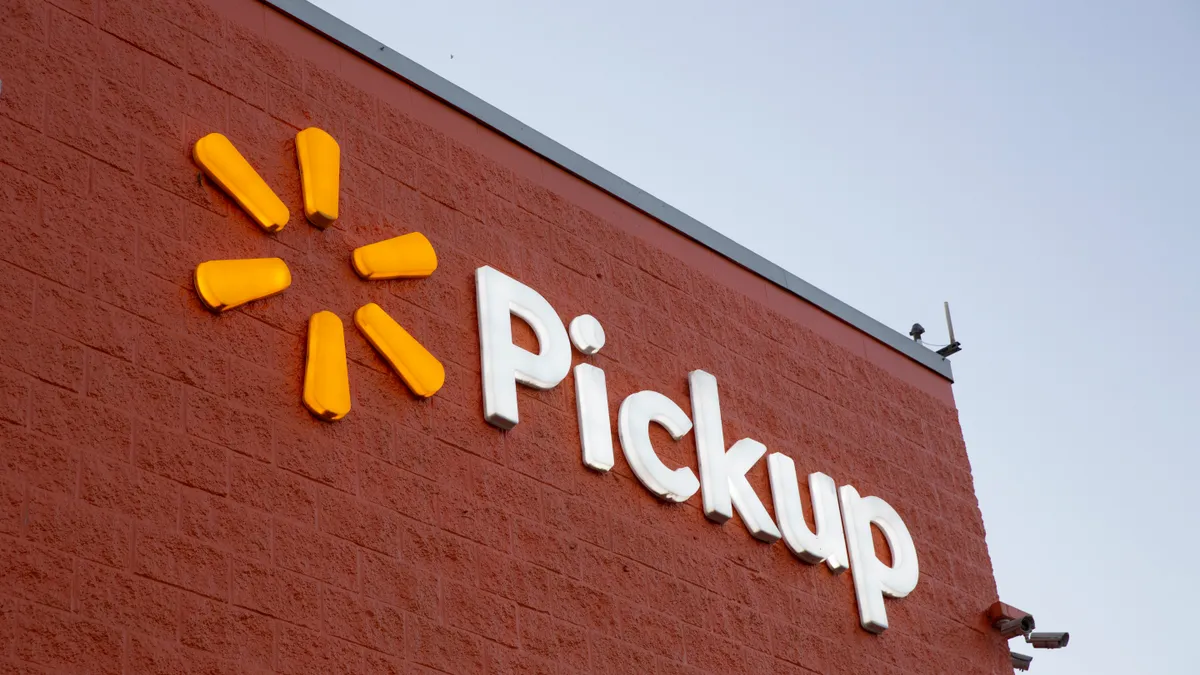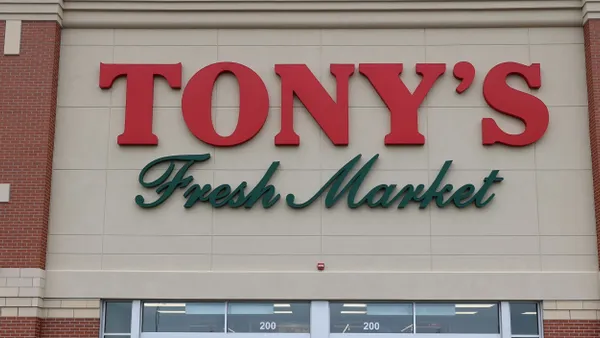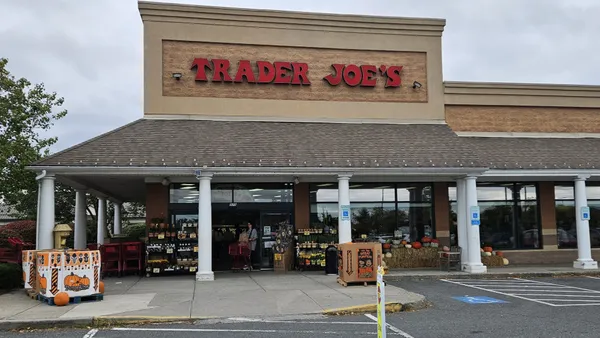Dive Brief:
- Walmart was the top choice of U.S. online grocery customers during March and April, with 47% of these shoppers ordering from the retailer, according to research conducted by Escalent, a human behavior and analytics company. Thirty-four percent of online grocery shoppers purchased from local grocery stores, 24% used Instacart and 5% ordered via Shipt.
- Walmart far outdistanced rival Amazon, which attracted orders from 19% of people who bought groceries online. Amazon was the most popular choice among online grocery consumers when asked which online grocery retailer they intended to try in addition to their favorite, with 31% saying they would likely place an order from the e-commerce giant.
- The findings also showed that 38% of online grocery shoppers expect to maintain or increase online shopping for groceries after the pandemic subsides. The study was based on a survey conducted between April 22 and 24 of 1,500 U.S. shoppers who buy groceries at least once per week.
Dive Insight:
Walmart secured its position as the top option among online grocery shoppers surveyed by Escalent at a time when the retailer recorded an enormous increase in online sales. The retailer’s e-commerce sales surged 74% year-over-year during the quarter that ended April 30, with the number of new customers trying pickup and delivery up four times since mid-March, when the pandemic began gripping the U.S. economy.
Overall, 24% of shoppers bought groceries online during March and April, up from 6% during the same two-month period in 2019, Escalent found.
Escalent’s research suggests that Walmart has been able to take advantage of its large network of brick-and-mortar stores to attract people interested in buying groceries without setting foot in a physical retail location, as noted by Food Navigator.
“Given Walmart’s strength, followed by that of local grocery brands, it is clear that when it comes to online grocery orders, consumers’ first instincts are to turn to the nearby brick-and-mortar brands that they normally visit each week,” according to Escalent’s report.
Walmart operated 5,355 U.S. stores as of Jan. 31, including 3,571 Supercenters, 687 Neighborhood Markets and 599 Sam’s Club locations, according to its website. As of Q1, the retailer had about 3,300 pickup locations, and more than 1,850 of its stores offered same-day delivery.
Amazon’s primary physical presence as a food retailer is through its Whole Foods division, which comprises about 500 stores.
Walmart’s large number of stores have also given it a leg up in fulfilling customers' orders even as grocery e-commerce providers have dealt with a deluge of orders that have heavily taxed their operations during the pandemic, Escalent pointed out. Other food retailers with extensive numbers of stores, like Kroger, Safeway and Publix, also benefited from having physical facilities located close to customers, the research showed.
Escalent found that nearly half of online grocery shoppers in the survey cited difficulty in obtaining a convenient delivery time as the biggest challenge they face in placing orders.
“Walmart and local grocery stores are clearly better at leveraging their formidable real-world infrastructure to get produce to consumers quicker, fresher and more conveniently,” the researchers reported.













